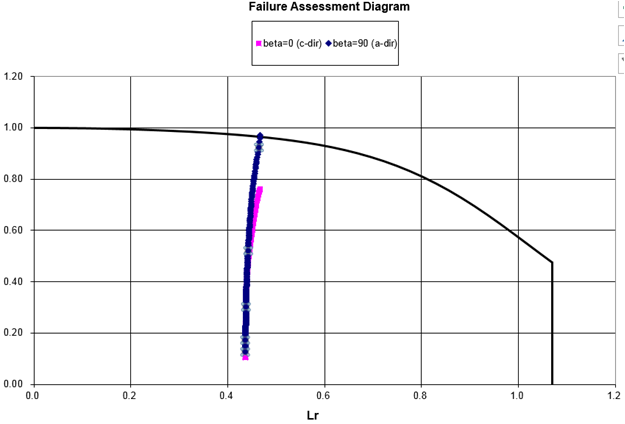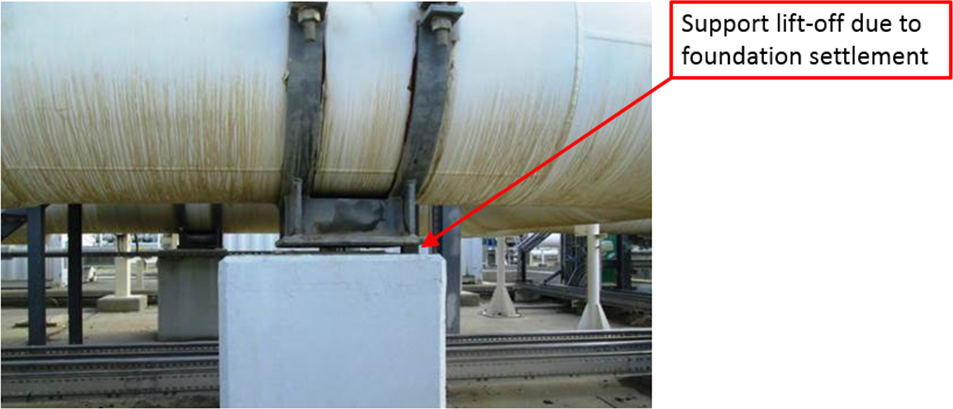FFS Assessment of Crack-like Flaws Discovered in Pressurized Equipment
It is often unsettling to have an inspection group discover a crack-like flaw in a piece of pressure containing equipment, particularly when the turn-around schedule is aggressive. Fortunately, there are well-established Fitness-for-service procedures in place to assess such flaws and help guide decision-making on whether to repair or to leave in place with a monitoring program. This blog post will outline the assessment approach typically employed by Becht Engineering staff when performing crack-like flaw assessments.
The performance of today’s advanced inspection technologies, such as Time of Diffraction (TOFD) and Phased Array Ultrasonic Testing (PAUT), significantly surpasses the flaw detection capacities that were available only some 10 years ago. As a result, it is not uncommon to discover crack-like flaws that likely were previously undetectable fabrication flaws. Sometimes an experienced inspector and/or fixed equipment engineer can examine the inspection data and conclude with reasonable certainty that the flaws are indeed fabrication defects. However, it becomes very difficult to justify not performing a fracture mechanics evaluation to prove that the flaws are indeed stable (safe) under design conditions and ensure that propagation rates, if any, are quantified and properly addressed in the Equipment Strategy and in a Risk-based Inspection (RBI) program.
Under some circumstances the flaws can be evaluated in a Level 1 procedure, using a screening curve approach from the Fitness-for-service standard API-579-1/ASME-FFS-1. If the assessed flaw is deemed acceptable by the screening curve approach, no further analysis is needed to demonstrate adequate protection against fracture and/or fatigue.
Such analyses can sometimes be performed by a highly qualified inspector or on-site fixed equipment engineer, but more often than not a detailed stress analysis is required to characterize the stress field in the vicinity of the flaw, for example in the presence of structural discontinuities in the equipment. At such locations, the stress field will include a bending component in addition to the membrane stress. In such cases, a Finite Element Analysis (FEA) is commonly employed to obtain the stress distribution through the thickness of the component and this stress distribution forms part of the input for a Fracture Mechanics analysis.
Other inputs includes the flaw geometry and the fracture toughness of the component material, which is determined by examining material data and service history. Careful consideration is given to any suspected in-service degradation, such as temper embrittlement of Cr-Mo steels or Wet H2S cracking in a vessel where a stainless steel lining has been compromised. Establishing appropriate fracture toughness of material degraded through such mechanisms typically requires input from a highly qualified metallurgist.
The assessed flaw (or flaws) are re-characterized per rules of API-579-1/ASME-FFS-1, where particular attention is given to flaw orientation with respect to the maximum principal stress in the flaw vicinity and to possible interaction with other nearby flaws. The re-characterized flaw is then subjected to a fracture mechanics analysis that plots the present flaw state on a Failure Assessment Diagram (FAD) to evaluate the present stability of the flaw. The analysis is usually expanded to include a crack-growth evaluation that will determine an estimate of the limiting flaw size (size where the flaw fall outside the FAD boundary) and an estimate on the number of operating cycles until this limiting size is reached. A typical FAD is shown in the figure below.

Typical FAD. This shows an initially stable flaw that is grown to critical size over many operating cycles.
The result of such assessments enables the Owner to make a risk-based decision on repairing/retiring the component and assists in setting inspection intervals if a repair is not undertaken. Becht Engineering is equipped with high-end tools to perform full crack-like flaw assessments, including stress analyses using industry-leading FEA software and fracture mechanics analyses using proprietary in-house developed tools. Our staff performs this type of assessment frequently and can typically meet requests to deliver assessment results on an urgent basis, for example when the discovery of crack-like flaws are at risk of extending turn-around schedules. Recent assessments include a heavy wall stainless lined reactor exhibiting cracking at the attachment welds of internal components, a heavy wall heat exchanger channel exhibiting cracking at a nozzle fillet weld and several heat exchanger shells with shallow cracking occurring in base metal behind a stainless lining.






